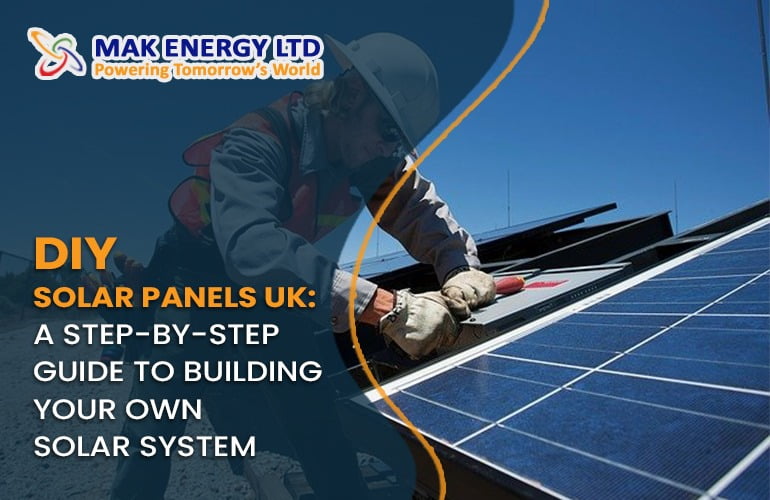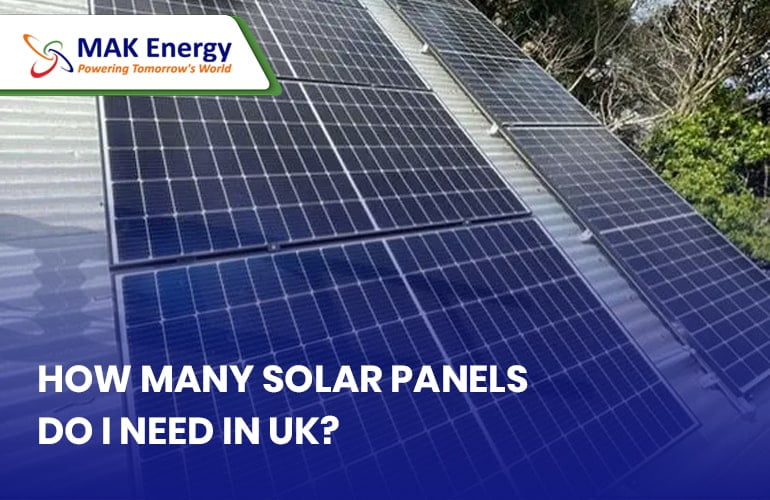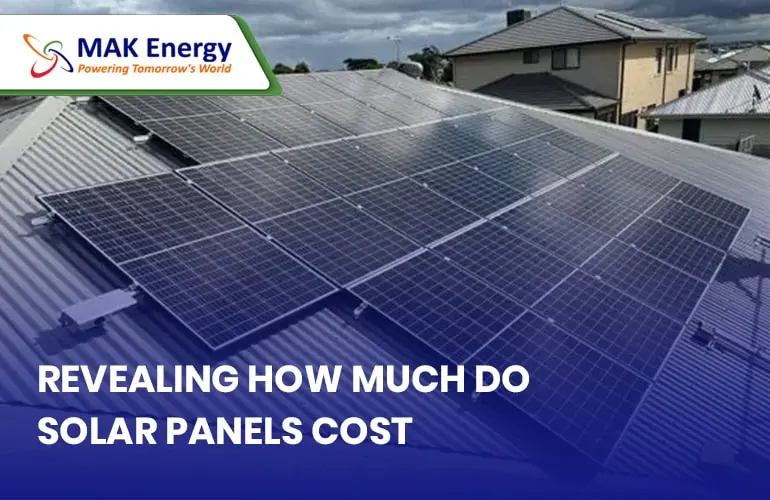Last updated: September 7th, 2023 at 12:30 pm
What's on the page?
As more and more people in the UK turn to renewable energy, the popularity of DIY solar panels has grown. By installing your own solar panels, you can save money on energy bills and reduce your carbon footprint. However, building your own solar system may seem like a daunting task, and it could be dangerous and expensive if the installation goes wrong. It is recommended to have your system installed by a professional and experienced team for effective functioning and maximum efficiency.
Key Notes
- DIY solar panel kits are increasingly popular in the UK, driven by a desire for energy independence and cost savings, as reported by The Guardian.
- Well-installed DIY solar panels can save homeowners hundreds of pounds annually on energy bills. With government incentives, the payback period can be relatively short.
- UK DIY solar panel systems usually range from 1 kW to 4 kW. Data from kit providers shows homeowners often choose these sizes to meet their energy needs effectively.
Can I Install Solar Panel Myself?
Yes, you can install the solar panel yourself if you are trained and have experience in installing solar panels. However, it’s important to note that the installation process is technical and complicated, and it is highly recommended to be done by professionals. MAK Energy offers experienced solar panel installers across the UK who are knowledgeable about environmental factors and optimal panel direction. Easily access their installation services at your doorstep.
To help you understand how to install a DIY solar panels UK, we have provided step-by-step information that will ultimately assist you if you plan to do it yourself. Let’s examine each step one by one.
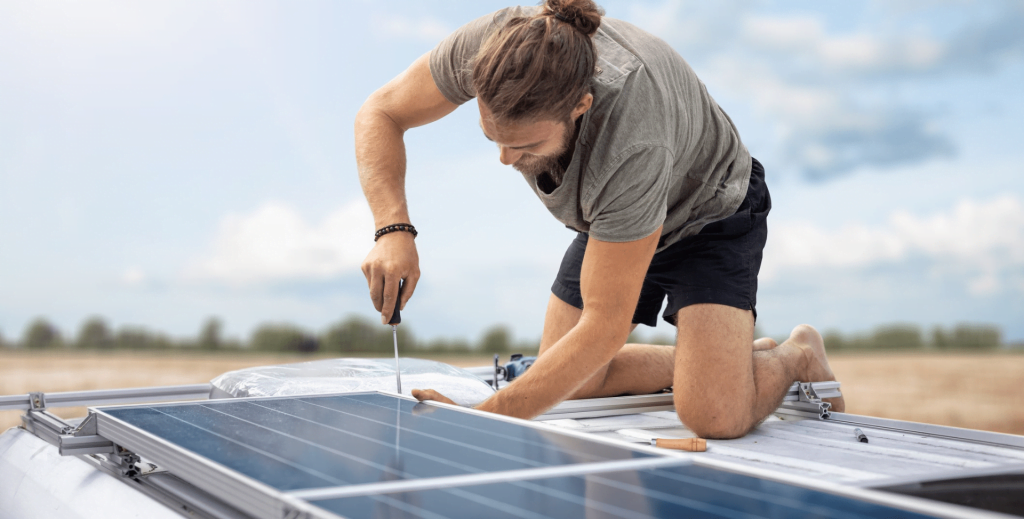
How to Size Solar Panel for Your Home
There are two essential things you must consider before learning how to size solar panels for your home, and these are:
- Daily energy consumption: Determine how much energy you consume on a daily basis.
- Number of sunlight hours: Take into account the number of hours of sunlight your home receives each day.
After understanding these two factors, you will be able to calculate the number of panels and their sizes required for your home.
By dividing your daily usage by the number of peak sun hours, you can determine how much energy your solar panels should generate per hour.
Then, divide that figure by the wattage of your chosen panel. For example, if your hourly power consumption is 2000Wh and you select a 405-watt panel, you will need 5 panels to meet your energy demand for that hour.
What is DIY Solar Panel Kits?
Solar systems come in different types, and so do the components of these systems. They function optimally when all the components are well-matched with one another. When shopping for solar system parts, ensure that the solar inverter, solar panels, batteries, and other components are suitable for each other and aligned with your needs.
DIY solar panel kits consist of a pre-selected set of compatible components for your system. This means you don’t have to purchase each solar system part individually. Buying a DIY solar panel kit will not only save you time but also money.
MAK Energy offers DIY solar panel kits in various sizes, tailored for different solar systems.
- On-grid DIY Solar Panel Kit
- Off-grid DIY Solar Panel Kit
- Hybrid DIY Solar Panel Kit
DIY Solar Panels UK: DIY Solar Panel Installation Process
- Determine your energy needs
- Assess your roof space for solar panel installation
- Find the Right Spot
- Decide on the Type of Solar Panels
- Check What Permits You Need
- Choose Your Solar System Installation Type
- Tool You Will Need If You Are Planning to Install Off Grid Solar System
- Purchase Your Solar Panels and Inverter
- Gather Your Tools: The Essentials You Will Need for A DIY Solar Installation
- Set Up a Circuit
- Install Your Solar Panels
- Test Your Solar System
- Enjoy Your Savings
Step 1: Determine Your Energy Needs
Before you start building your solar system, you need to determine how much energy you use. Understanding your energy needs is the first step towards a successful DIY solar panel installation process. The best way to check your energy consumption is to review your monthly electricity bill and identify the annual kilowatt-hour (kWh) usage.
For example, if you consume between 3000kWh and 4000kWh per year, you can assess which system would meet your energy needs. In this case, a 4kW solar system would be suitable for this category of electricity consumer. Determining the size will make it easier to select the right system for your home.
![]()
Step 2: Assess Your Roof Space for Solar Panel Installation
Before proceeding with the purchase of solar panels, it is essential to assess the roof space available in your home. If you have limited space, you will need to consider larger-sized solar panels, while smaller panels can be installed if you have ample space. Accurately measuring the available installation space is a crucial step towards a successful solar panel installation.
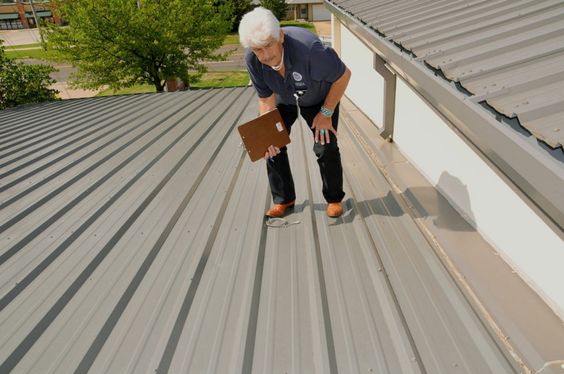
Step 3: Find the Right Spot
Before delving into the installation process, it is necessary to find the right spot, keeping in mind the roof type. If you are planning to install solar panels on a pitched shed roof, the direction (ideally south for maximum sun exposure) and angle (best at a 35-degree angle from horizontal) are the most important things you must check.
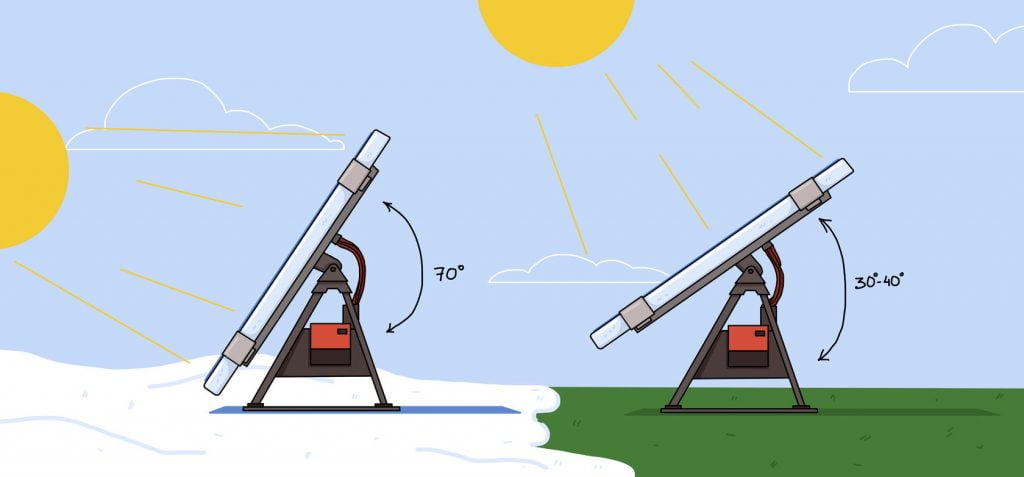
If you are planning to install solar panels on a flat roof, make sure the roof can bear the weight of the solar panels. In the case of a ground-mounted structure, ensure your panels have a sunny spot in the garden.
Step 4: Decide on the Type of Solar Panels
The performance and efficiency of a solar system largely depend on the type and quality of the solar panels used. In general, there are two types of diy solar panels available in the market: monocrystalline and polycrystalline. Monocrystalline panels are more expensive, but they offer higher efficiency and occupy less space. On the other hand, polycrystalline panels are cheaper but require more space and have slightly lower efficiency.
It’s important to choose wisely based on your specific needs and considering the purpose of the installation. For businesses, opting for monocrystalline panels is recommended as they provide a more efficient system that supports uninterrupted performance and growth.
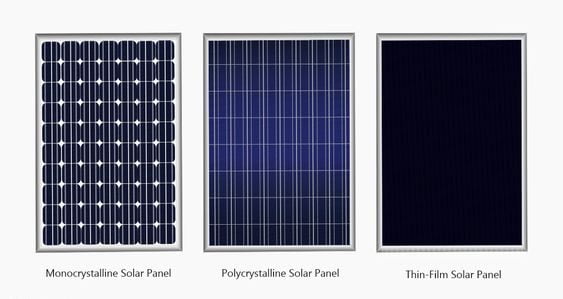
Step 5: Check What Permits You Need
For solar panels installed on an A-frame or ground-mounted system, you will need to obtain permission if you plan to exceed a total of 6 arrays. If you are considering a grid-tied DIY solar panel installation, it is advisable to check whether your energy supplier supports DIY installation. To qualify for the SEG program, you must possess an MCD Certification and an Energy Performance Certification rated D or above.
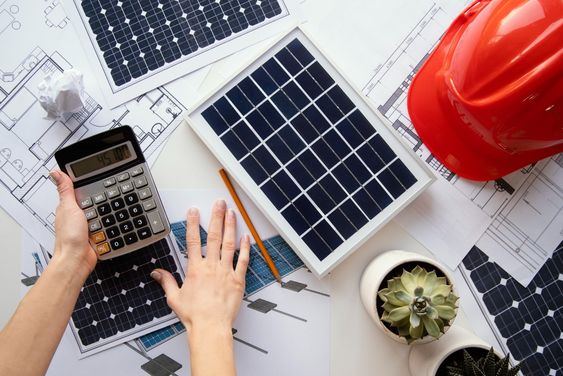
Step 6: Choose Your Solar System Installation Type
You may be considering an on-grid, off-grid, or hybrid solar system for your installation. Before diving into the DIY solar panels process, it is essential to determine the type of solar system you intend to install. For residential homes, a hybrid solar system is often the best choice as it allows for the storage of excess energy in batteries, which can be utilized during peak hours to further reduce energy bills. On the other hand, if you reside in a remote location without access to grid electricity, an off-grid solar system becomes the only viable option. This ensures self-sufficiency in generating and utilizing electricity independently.
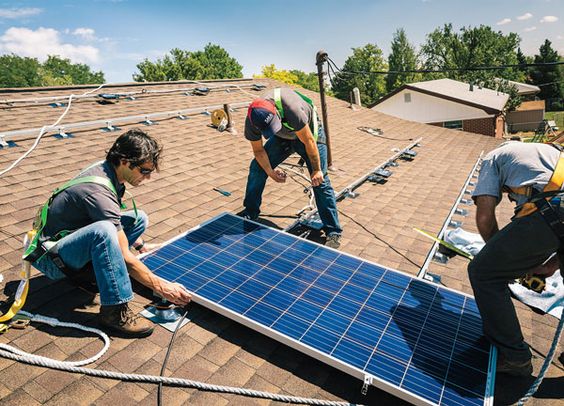
Step 7: Tool You Will Need If You Are Planning to Install Off Grid Solar System
In the case of off-grid solar system installations, you will need to acquire additional tools and equipment. These include a solar charge controller, a battery bank, DC connectors, an off-grid inverter, and an electricity backup option such as a generator. These components are necessary to ensure the efficient operation and reliability of your off-grid solar system.
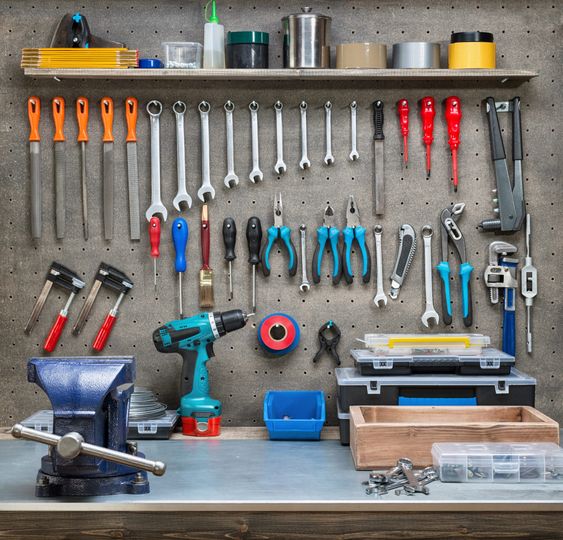
Step 8: Purchase Your Solar Panels & Inverter
Now, the actual work begins. Solar panels and inverters can be purchased either online or from local markets. However, it is important to keep in mind that there are numerous solar panel and inverter manufacturing companies, each offering a variety of options. It is crucial to choose the best among them. The top solar panel brands include Jinko, Longi, Canadian Solar, and JA Solar. Compare the prices, efficiency, performance, warranty, and lifespan of each solar panel. Additionally, visiting e-commerce sites to read reviews from customers can provide valuable insights and help you make an informed decision.
When it comes to solar inverters, the first consideration should be the type of solar system you are planning to install: on-grid, off-grid, or hybrid. Select an inverter that aligns with your specific requirements. Feeling overwhelmed by the process of purchasing a solar inverter? Don’t worry, we have compiled a list of the best solar inverters available, making it easier for you to make a choice.
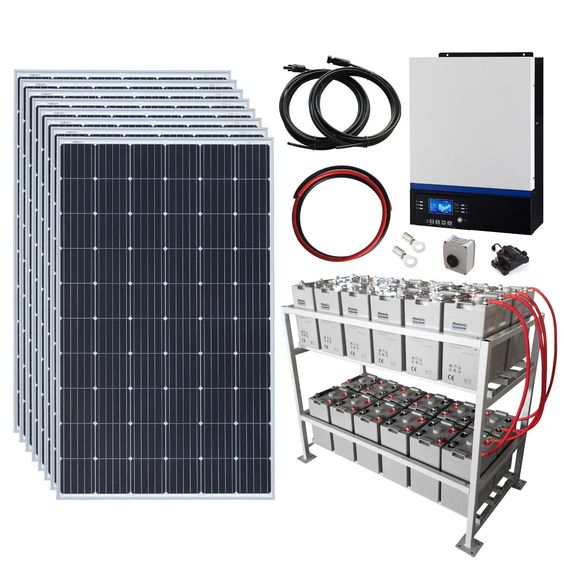
Step 9: Gather Your Tools: The Essentials You Will Need For A DIY Solar panel Installation
After purchasing solar panels and the solar inverter, now You will need a few basic tools to install your diy solar panels. These include a drill, screwdriver, wire cutters, and safety equipment such as gloves and safety glasses. Make sure you have all the necessary tools before you start installation.
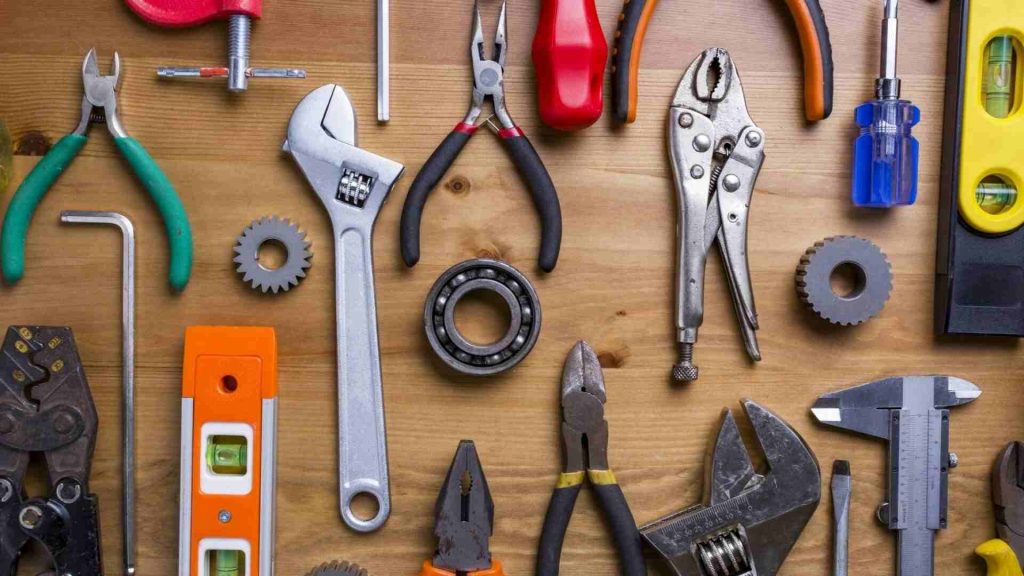
Tools You need for DIY Solar Panel Installation
- Drill
- Screwdriver
- Wire Cutter
- Safety Equipment – gloves and safety glasses
- Level
- Flashing
- Roof Sealant
Step 10: Set Up a Circuit
Setting up the circuit for a solar system is a technical task that requires careful attention and skill to ensure proper execution. Prior to mounting the solar panel structure, it is highly recommended to have a professional electrician handle the circuit installation, unless you possess the necessary expertise. It is crucial to prioritize safety and accuracy in this process. Take the time to set up the circuit diligently, ensuring that all connections are made correctly and securely.
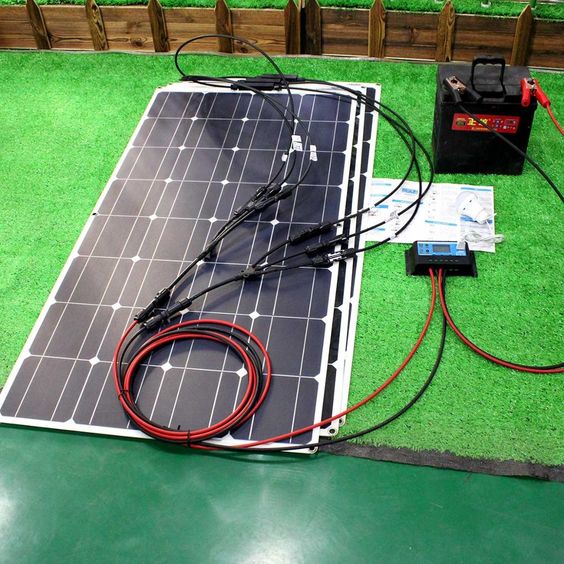
Step 11: Install Your Solar Panels
Now it’s time to start installing solar panels. This is where things can get tricky, so it’s important to follow the instructions carefully. Start by mounting the panels on the roof or other suitable location. Then, connect the panels to the inverter, which converts the DC power generated by the panels into AC power for your home. Finally, connect the inverter to your home’s electrical system.

Step 12: Test Your Solar System
Once the system is successfully installed, the next step is system testing, which can be a challenging process typically carried out by professional electricians. However, if you feel confident, you can perform the testing yourself. Utilize a multimeter to measure the voltage output of both the solar panels and the inverter. If you are not comfortable conducting these tests independently, it is advisable to hire a professional to ensure accurate results and the optimal functioning of your system.
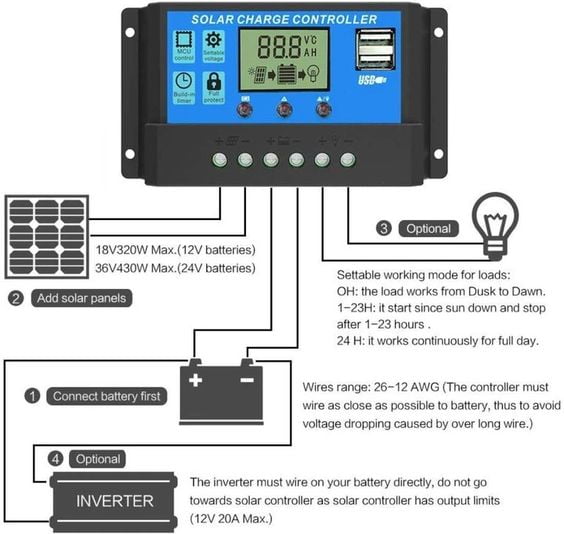
Step 13: Enjoy Your Savings
Once your solar system is up and running, you can sit back and enjoy the savings on your energy bills. You will also be doing your part to reduce your carbon footprint and help the environment.
How Much Does It Cost to Install Solar Panels?
The amount of money you need to have in your pocket before installing your own solar system depends on the system size, installation type, location, and labor costs if you opt for professional installation. If you’re skilled enough, you can even install it yourself. On average, a UK household typically requires a 4kW solar system, which would cost around £6000 for a 4kW grid-tied solar system.
Factors That Can Affect the Installation Cost
- Your System Size
- Type of installation
- Location – where you live
- Labor Cost – if you choose an installer
What are the Pros and Cons of DIY Solar Panel Installation?
Pros
-
- Cost-effective and cheaper installation is possible, but it also depends on the successful installation.
- If everything goes perfectly, you will find it easy to maintain and repair your solar system because you are familiar with its structure.
Cons
-
- There is a higher likelihood of needing repairs and component replacements.
- A minor mistake can cost you thousands.
- If installed incorrectly, it can result in fires or damage to your roof.
- You will have no warranty in case of any damage.
- DIY solar panels are less likely to perform well for 25 years compared to those installed by professionals.
- It can be dangerous if you are not well aware of the installation process.
DIY Solar Panel UK Building Regulations for Home
Whether you install a solar panel system by yourself or hire a professional installer, it is crucial to adhere to the UK building regulations for solar panel installations. Regulations may vary in different areas.
But in general, the following regulations need to be followed before undertaking a DIY solar panel installation.
- The first and foremost step is to ensure that your roof is strong enough to bear the weight of the solar panels.
- Enhancing electrical safety for your installation.
- Securely mounting your solar panels and other components.
- Ensuring proper installation of solar components for improved ventilation.
- Mitigating the fire risk associated with your solar panels.
- Ensuring that cables are properly sealed to prevent moisture entry into your structure.
Do I Need Permission for Solar Panel Installation?
In most areas, you will not need permission for solar panel installation unless your home or building is listed or located in a designated conservation area.
However, there are certain cases in which you may be required to seek permission for solar panel installation.
- If your property is classified as a listed building.
- If you reside in an area that has been designated as a conservation area.
- If you plan to undertake significant modifications to the building, such as enlargements.
- If your solar panels extend beyond 0.2 meters or 20 centimeters from the roof. For instance, flat roof installations often exceed 0.2 meters due to the angled stands.
MAK Energy Ltd: A Trusted Supplier of DIY Solar Panels in the UK, If you are looking for a trusted supplier of DIY solar panels in the UK, look no further than MAK Energy Ltd. They offer a range of high-quality solar panels at affordable prices, along with expert advice and support to help you through the installation process. With over 15 years of experience in the industry, MAK Energy Ltd is a name you can trust.
In addition to providing solar panels, MAK Energy Ltd also offers a range of other renewable energy products and services. These include wind turbines, solar hot water systems, and battery storage solutions. Whether you are looking to reduce your energy bills, reduce your carbon footprint, or both, MAK Energy Ltd has the expertise and products you need.
In conclusion, building a DIY solar panel system in the UK can be a challenging yet rewarding project for those willing to take on the task. By following the steps outlined in this guide and carefully considering the costs and benefits, you can create a solar system that meets your energy needs and reduces your carbon footprint.
However, it is important to note that building a solar system requires technical knowledge and experience, and if you are unsure about any aspect of the process, it is best to seek professional help. With that said, if you have the skills and motivation, building a DIY solar panels UK can be a great way to save money on your energy bills and contribute to a more sustainable future.

